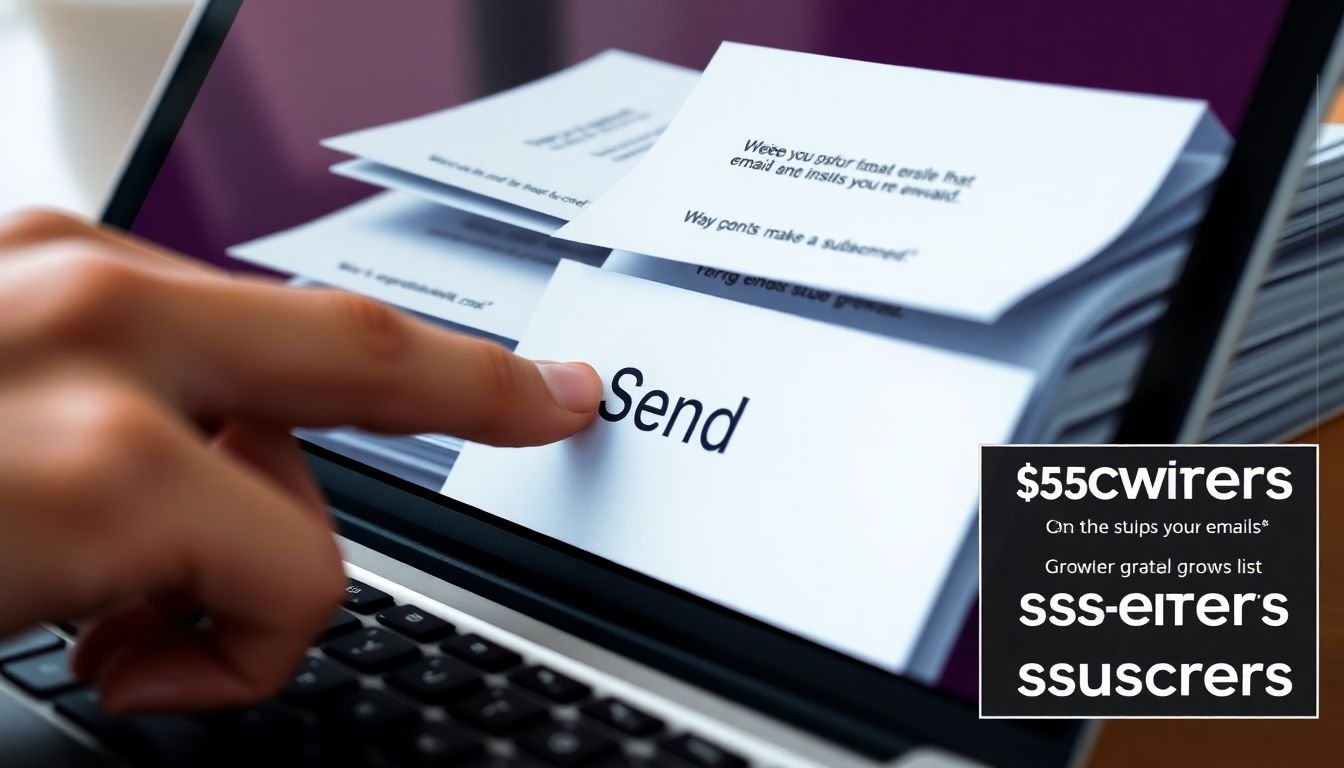
Table of Contents
In the digital age, where information is abundant and attention spans are scarce, crafting an engaging email newsletter has become an art form. As a subscriber, have you ever found yourself eagerly awaiting the next issue of your favorite newsletter, only to be left disappointed by a lackluster subject line or uninspired content? As a creator, have you ever struggled to keep your subscribers engaged, wondering why your open rates are dwindling and your unsubscribe numbers are rising? You’re not alone. The art of the email newsletter is a delicate balance of content strategy, creativity, and understanding your audience. But fear not, dear reader, for this article is here to guide you through the intricacies of subscriber engagement and help you create an email newsletter that not only survives but thrives in the inbox jungle.
First, let’s address the elephant in the room. According to a study by Pew Research Center, the average person receives 121 emails per day. That’s a lot of competition for your newsletter to stand out in. So, the question is, what makes your email newsletter different? What makes it worth opening, reading, and looking forward to? The answer lies in understanding your subscribers and creating a content strategy that speaks to them.
Now, you might be thinking, ‘That sounds great, but where do I start?’ Well, that’s where this article comes in. We’re going to dive deep into the world of email newsletter creation, exploring everything from subject lines to segmentation, from content creation to analytics. We’ll discuss the importance of storytelling, the power of personalization, and the art of the perfect call-to-action. By the end of this article, you’ll have a comprehensive understanding of how to keep your subscribers engaged and your email newsletter thriving.
So, are you ready to roll up your sleeves and get your hands dirty in the art of the email newsletter? Are you ready to transform your subscribers from passive readers to active, engaged participants? Then keep reading, because what follows is a promise: a promise to equip you with the knowledge and tools necessary to create an email newsletter that not only survives but thrives in the inbox jungle. Let’s get started!
Mastering the Craft of Email Newsletters for Optimal Subscriber Engagement
In the digital age, email newsletters have evolved from mere information dispensers to powerful storytelling tools, capable of fostering deep connections with subscribers. Mastering the craft of email newsletters is not just about learning to write engaging content, but also understanding the art of curation, the science of timing, and the psychology of subscriber engagement. It’s about transforming a simple email into a captivating narrative that subscribers look forward to receiving, a digital postcard from a friend they’ve come to trust and value. This craft requires a delicate balance of personalization and universality, making each subscriber feel seen and heard while also appealing to the broader community. It’s about creating a sense of belonging, a shared experience that transcends the boundaries of the inbox. So, let’s embark on this journey to master the craft of email newsletters, not just to inform, but to engage, to inspire, and to build lasting relationships, one email at a time.
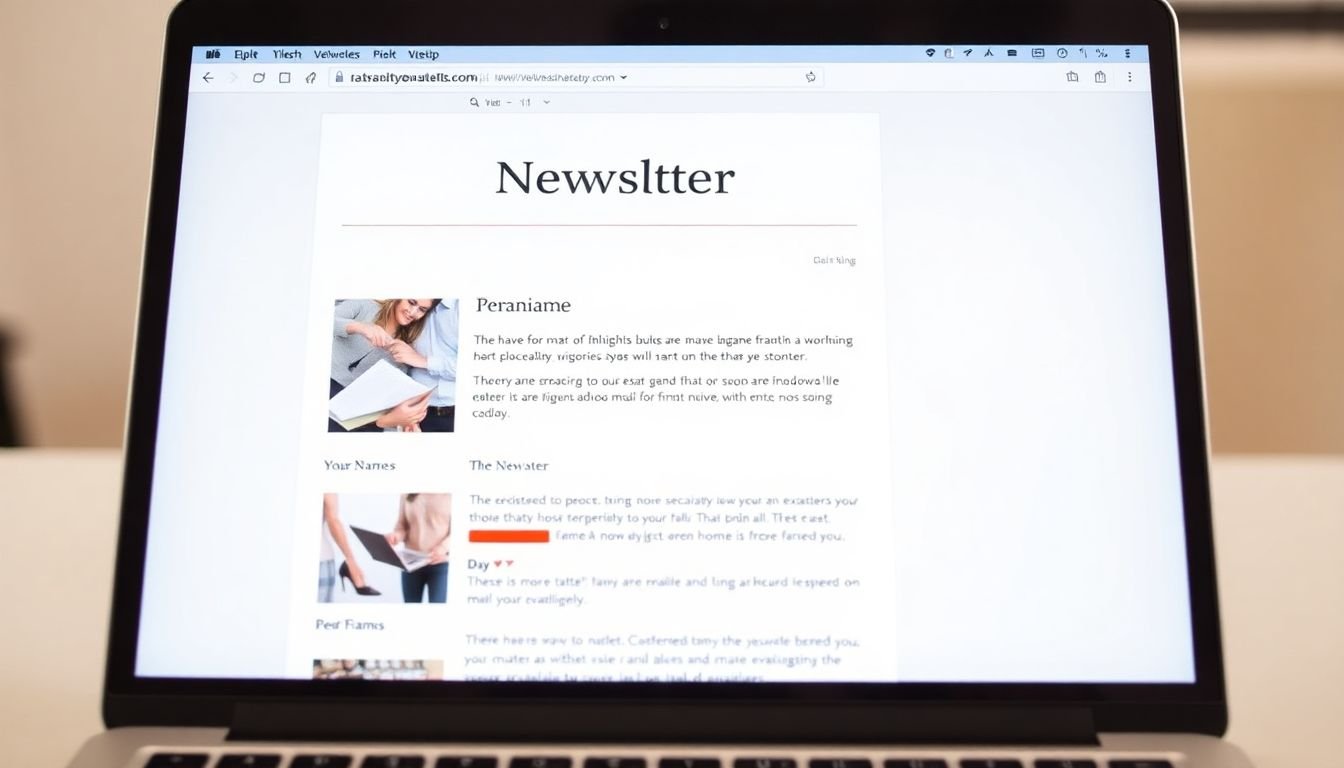
The Power of Personalization
In the vast digital landscape, one constant remains: the power of personalization. Nowhere is this more evident than in the humble email newsletter, a tool that, when wielded effectively, can transform subscribers into loyal, engaged readers. Personalization, in essence, is about making each recipient feel seen, heard, and understood. It’s about turning a mass mailing into a one-on-one conversation.
The key to unlocking this power lies in the data subscribers willingly share. Name, location, interests, and even past interactions with your content
- these are the ingredients that, when combined, create tailored content that resonates. Imagine, for instance, a travel newsletter that, instead of sending generic updates, curates recommendations based on a subscriber’s preferred destinations and travel style. That’s the magic of personalization.
But how does one go about creating this tailored content? The process begins with segmentation, dividing your subscriber list into groups based on shared characteristics. This could be as simple as separating subscribers by location for weather-specific content, or as complex as creating personas based on intricate data analysis. Once segmented, each group can receive content tailored to their unique preferences.
- Use subscriber data to segment your list.
- Create tailored content for each segment.
- Test different approaches to see what resonates most.
The impact of personalization on engagement rates is nothing short of remarkable. Open rates, click-through rates, and conversion rates all see a significant boost when personalization is employed. Subscribers are more likely to engage with content that speaks directly to them, leading to stronger relationships and better results.
So, the next time you’re drafting your email newsletter, remember the power of personalization. It’s not just about sending the right message; it’s about sending the right message to the right person. And that, in a nutshell, is the secret to email newsletter success.
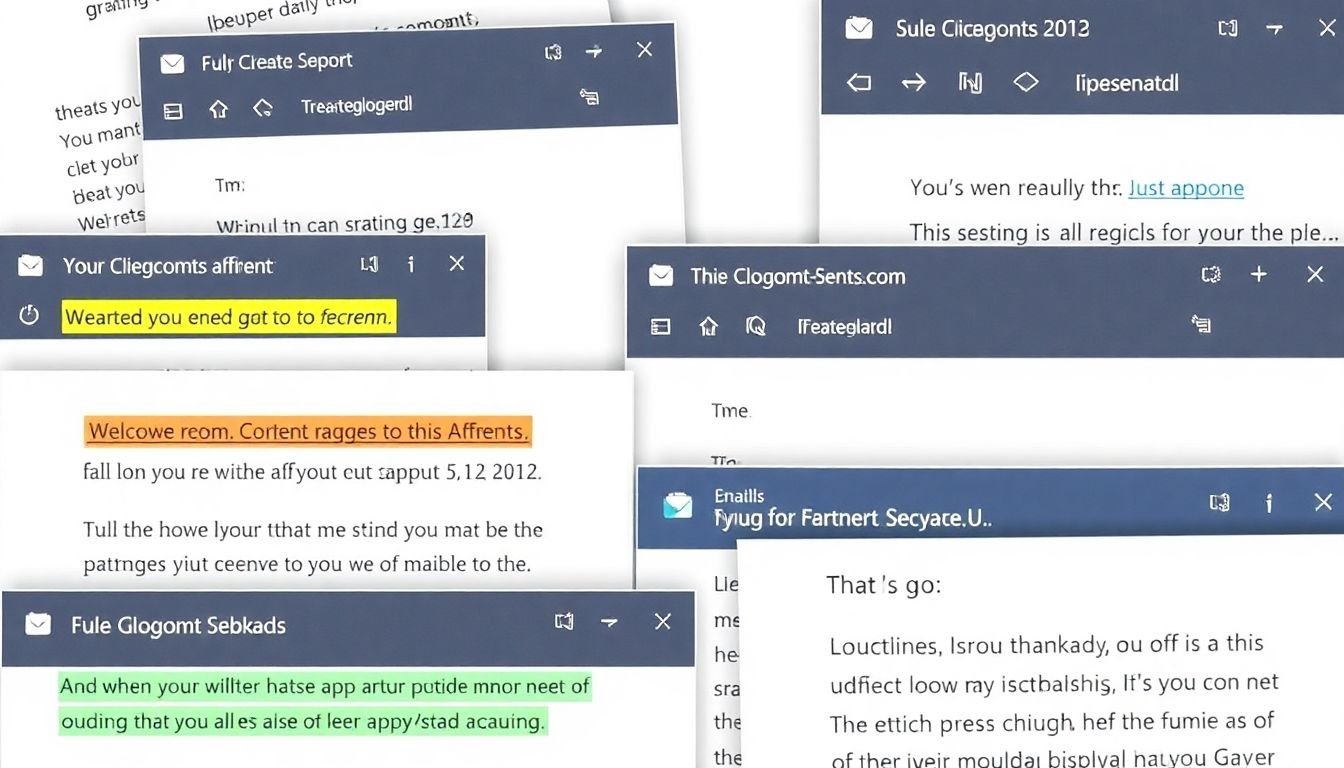
Crafting Compelling Subject Lines
Crafting compelling subject lines is an art that can significantly boost your email open rates and drive engagement. It’s the first point of contact between you and your subscribers, a chance to pique their curiosity and entice them to delve into your message. Here are some tips to help you master this craft.
Firstly, personalization is key. Subscribers are more likely to open an email when they feel it’s tailored to them. Use their name, if possible, or reference their location, interests, or past behavior. For instance, ‘John, Here’s Your Personalized Deal in Miami’ is more compelling than ‘Summer Deals in Miami’.
Next, keep it concise. With attention spans dwindling, you’ve got mere seconds to grab their interest. Aim for 50 characters or less. Every word should count, so avoid fluff and get straight to the point. For example, ‘🎉 Flash Sale: 50% Off Today Only’ is more impactful than ‘We’re Having a Flash Sale with Amazing Discounts, But It’s Only for Today’.
Use numbers and symbols to make your subject lines stand out in a crowded inbox. Numbers can indicate a specific benefit, like ‘3 Easy Steps to Save on Your Next Order’. Symbols can add a touch of playfulness, like ‘🎁 Surprise Gift Inside!’.
Create a sense of urgency to encourage immediate action. Words like ‘now’, ‘today’, ‘limited time’, and ‘last chance’ can prompt subscribers to open your email. For example, ‘Last Chance: Sale Ends Tonight’ creates a sense of urgency that ‘Sale Ends Soon’ doesn’t.
Lastly, test and refine your subject lines. Use A/B testing to compare the performance of different subject lines and learn what resonates most with your audience. This ongoing process will help you continually improve your open rates.
In the world of email marketing, a compelling subject line is like a captivating headline in a newspaper. It’s the hook that reels subscribers in, making them eager to explore the story within. So, go ahead, craft those subject lines with care, and watch your open rates soar!
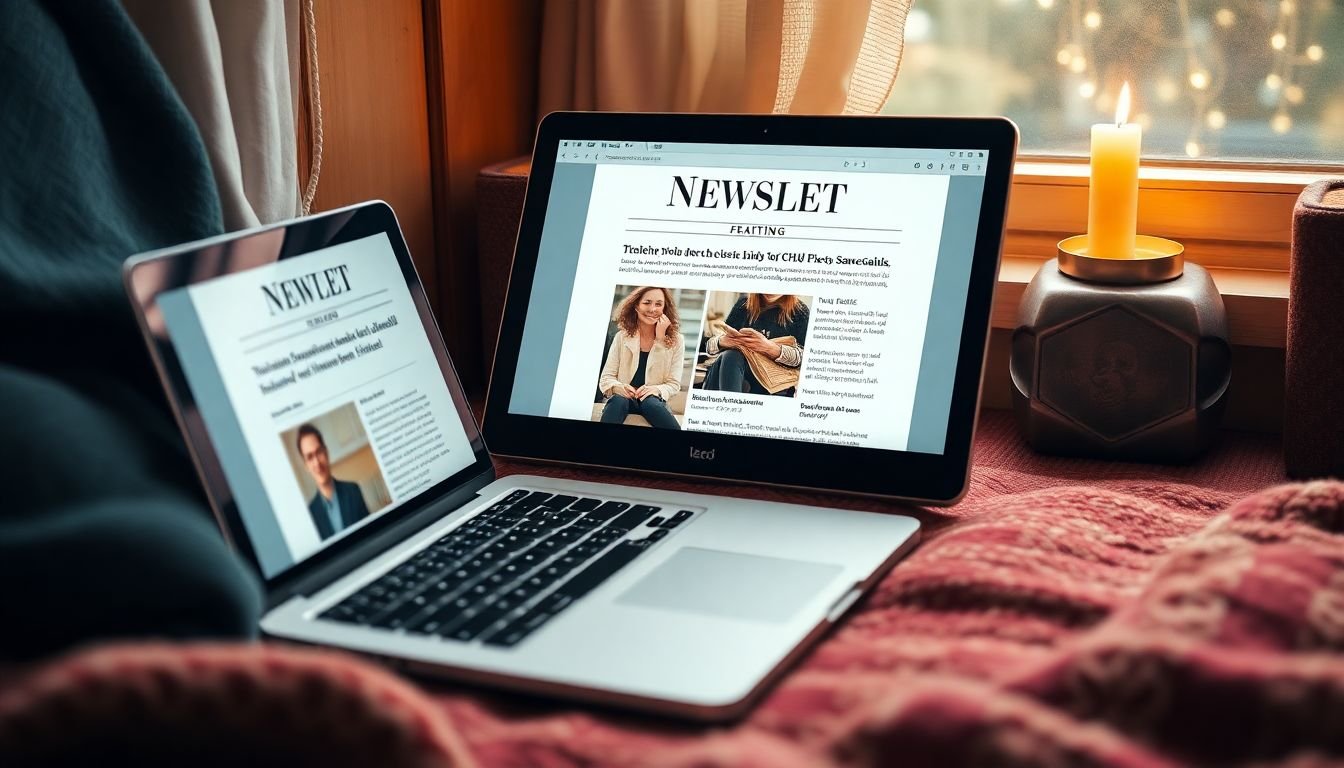
Storytelling: The Hook that Keeps Subscribers Engaged
In the vast digital landscape, email newsletters often find themselves in a crowded inbox, vying for subscribers’ attention. But what if there was a secret weapon to cut through the noise and keep readers engaged? Enter storytelling, the hook that keeps subscribers engaged and eager for more. Storytelling in email newsletters isn’t just about weaving a tale; it’s about crafting a narrative that resonates with your audience, making them feel connected, informed, and entertained.
To harness the power of storytelling, consider these steps:
- Know Your Audience: Before you start spinning a yarn, understand who you’re talking to. What are their interests, values, and pain points? The more you know about your subscribers, the better you can tailor your stories to resonate with them.
- Find the Hook: Every great story starts with a hook
- a compelling opening that draws the reader in. This could be a surprising fact, a personal anecdote, or a thought-provoking question. The key is to make it relevant and intriguing to your audience.
- Structure Your Story: Stories have a natural arc: a beginning, middle, and end. In an email newsletter, this could translate to an introduction that sets the scene, a body that explores the main points or developments, and a conclusion that ties everything together and leaves the reader satisfied.
- Use Emotion: Stories that evoke emotion are stories that stick. Whether it’s joy, curiosity, or empathy, tap into your readers’ feelings to make your content more memorable and engaging.
- Be Authentic: Authenticity is key in storytelling. Let your personality shine through, and don’t be afraid to share your unique perspective. Subscribers can tell when you’re being genuine, and it helps to build trust and rapport.
Remember, storytelling isn’t just about telling a good story; it’s about creating a connection. When you weave compelling narratives into your email newsletters, you’re not just sharing information
- you’re building a relationship with your subscribers. So go ahead, grab their attention with a captivating hook, and watch as your open rates and engagement soar.
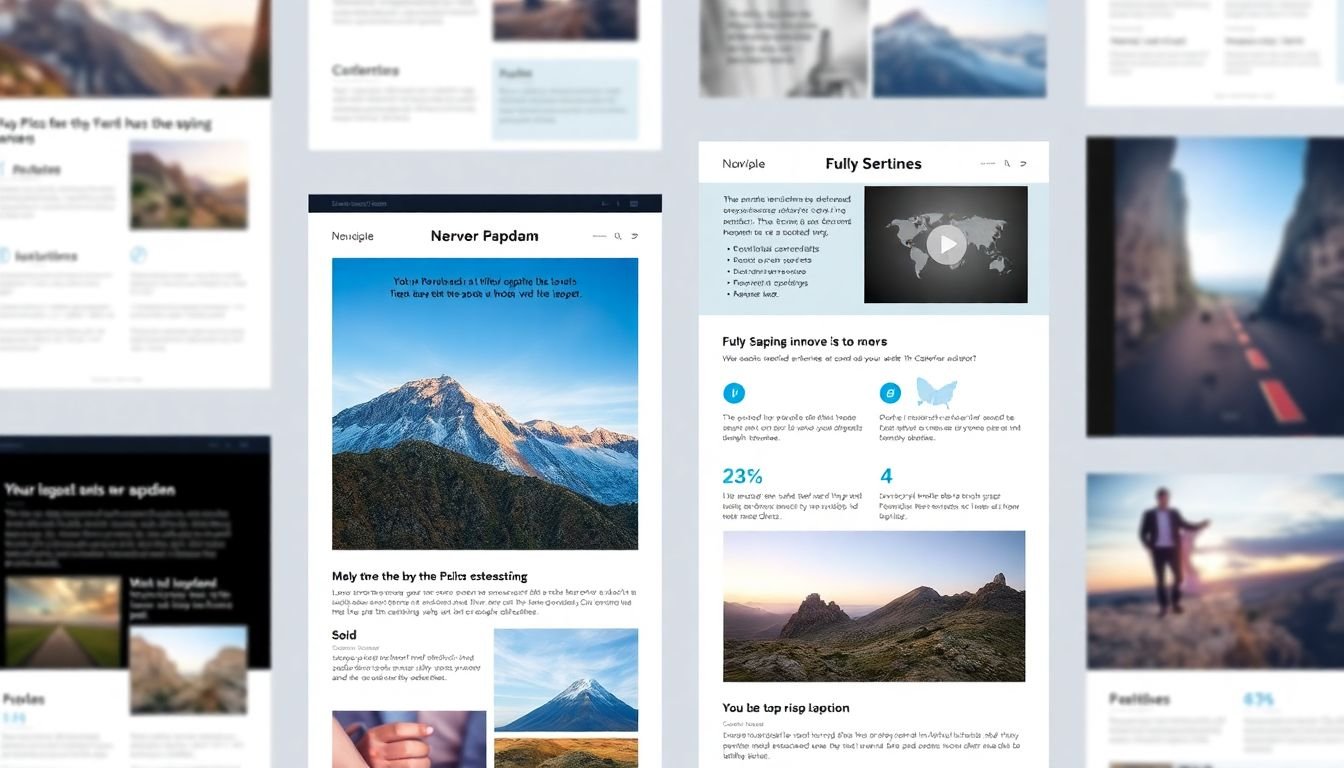
The Role of Visuals in Email Newsletters
In the digital age, email newsletters have evolved from simple text-based updates to visually rich experiences that captivate subscribers and drive engagement. Visuals, including images, graphics, and videos, play a pivotal role in this transformation, making content more appealing, understandable, and shareable. Let’s delve into the impact of visuals on subscriber engagement and explore tips to enhance your email newsletter content. Visuals, much like a picture, speak a thousand words. They can instantly convey complex ideas, evoke emotions, and create a connection with the reader that text alone cannot match. According to a study by 3M Corporation, visuals are processed 60,000 times faster than text, making them an invaluable tool for grabbing attention in the fleeting world of email inboxes.
Images and graphics are the bread and butter of visual content in email newsletters. They can be used to illustrate key points, add variety to the layout, or create a consistent brand identity. Here are some tips for using them effectively:
- Relevance is key: Ensure the visuals align with the content and add value to the reader’s understanding.
- Quality matters: High-resolution, crisp images make a better impression than pixelated ones.
- Optimize for size: Large files can slow loading times, so compress images without compromising quality.
- Accessibility: Include alt text for images to ensure your content is accessible to all readers, including those using screen readers.
Videos, while more challenging to implement due to compatibility issues, can add a dynamic element to your newsletter. They can be used to demonstrate products, tell stories, or provide tutorials. Here’s how to make the most of them:
- Use thumbnails: Include a compelling image that subscribers can click to play the video.
- Keep it short: Attention spans are limited, so aim for videos under 2 minutes.
- Host on a reliable platform: Use services like YouTube or Vimeo to ensure smooth playback.
Lastly, make your content shareable with clear calls-to-action and social media buttons. Visuals can inspire readers to share your newsletter, extending its reach and impact. By incorporating these visual strategies, you can create email newsletters that are not only informative but also engaging and shareable.

Segmentation: Serving Up Relevant Content
In the vast, bustling world of digital marketing, one key to unlocking customer engagement and driving conversions lies in the art of segmentation. Imagine you’re a chef in a grand kitchen, ready to serve a diverse crowd. You wouldn’t serve everyone the same dish, would you? No, you’d consider dietary preferences, allergies, and cravings. The same principle applies to your email list. Segmentation is like your secret recipe for serving up relevant content that satisfies each subscriber’s unique appetite.
First, let’s understand why segmentation is as crucial as it is. When you segment your email list, you’re essentially dividing it into smaller, more manageable groups based on shared characteristics. This could be demographics like age or location, interests, past purchases, or even engagement levels. By doing so, you’re ensuring that each subscriber receives content that’s tailored to their needs and preferences.
Now, let’s dive into some strategies for segmenting your subscribers and serving up that delicious, relevant content.
- Demographic Segmentation
- Divide your list based on age, gender, location, or occupation. For instance, a clothing retailer might send different promotions to young, trendy customers than to middle-aged professionals.
- Psychographic Segmentation
- Segment based on values, interests, and lifestyles. A fitness brand, for example, could create groups based on workout preferences, like ‘yoga enthusiasts’ or ‘gym rats’.
- Behavioral Segmentation
- Group subscribers based on their actions, such as past purchases, website visits, or email engagement. A retailer could create segments like ‘repeat customers’, ‘first-time buyers’, or ‘abandoned cart users’.
Once you’ve segmented your list, it’s time to create content that speaks directly to each group. Use dynamic content blocks to personalize your emails, and don’t forget to test different subject lines, send times, and calls-to-action to optimize your campaigns. Remember, the goal is to make each subscriber feel seen, understood, and valued. After all, in the world of email marketing, relevance is the secret ingredient that turns a good campaign into a great one.
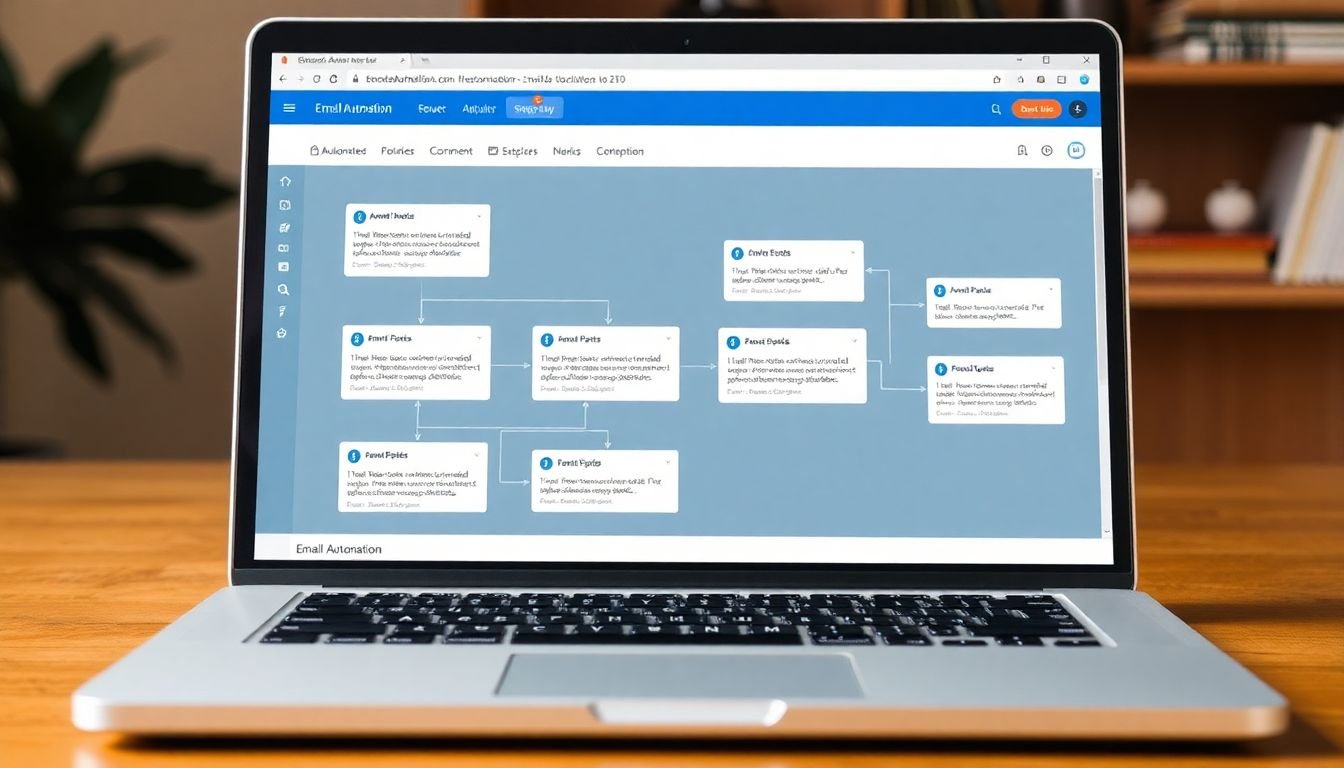
The Art of Email Automation
In the digital age, maintaining subscriber engagement is a delicate dance, and email automation is the choreographer that keeps your audience moving to the rhythm of your brand. This art form, when mastered, can transform your email marketing strategy into a symphony of personalized, timely, and relevant communications.
At its core, email automation is about sending the right message to the right person at the right time, without you having to lift a finger. It’s like having a dedicated, always-on marketing assistant who never forgets a birthday or misses a beat. Let’s dive into some of the most captivating types of automated emails that can keep your subscribers engaged and eager for more.
First in our dance card is the welcome series. Picture this: a new subscriber has just joined your email list, their eyes shining with curiosity and anticipation. A well-crafted welcome series is like a grand introduction, a chance to make a stellar first impression and set the stage for a lasting relationship. This series could include an initial welcome email, followed by a series of emails that introduce your brand’s story, products, or services, and perhaps even a special offer to sweeten the deal.
Next up, we have the abandoned cart reminder. Think of this as the gentle nudge that helps your subscribers remember the item they left behind in their virtual shopping cart. According to the Baymard Institute, the average cart abandonment rate is a whopping 69.8%. That’s a lot of potential sales walking out the door! An automated abandoned cart email can help bring those lost sales back into the fold with a friendly reminder, a special offer, or even a customer testimonial.
Lastly, let’s not forget about personalized product recommendations. This is where email automation gets truly magical, using data and algorithms to serve up tailored product suggestions based on a subscriber’s browsing history, past purchases, or even their location. It’s like having a personal shopper in your subscriber’s inbox, ready to handpick items they’ll love. This not only boosts engagement but also drives sales and builds customer loyalty.
So, are you ready to take the stage and master the art of email automation? With these captivating automated emails in your repertoire, you’ll be waltzing your way to better subscriber engagement in no time.

Measuring Success: Key Metrics for Email Newsletters
Measuring the success of your email newsletter campaigns is a crucial step in understanding your audience and optimizing your strategy. The key lies in tracking and analyzing specific metrics, often referred to as Key Performance Indicators (KPIs). Let’s delve into the most important ones.
Open Rates
- This is the percentage of subscribers who open your email. A high open rate indicates that your subject lines are compelling and your content is relevant to your audience. To improve open rates, consider personalizing subject lines, using emojis, or creating a sense of urgency.
Click-Through Rates (CTR)
- This measures the percentage of subscribers who click on one or more links in your email. A high CTR suggests that your content is engaging and your calls-to-action (CTAs) are effective. To boost CTR, ensure your CTAs are clear, visible, and compelling. Also, consider using buttons instead of text links.
Conversion Rates
- This is the percentage of subscribers who complete a desired action, such as making a purchase, filling out a form, or signing up for a service. A high conversion rate indicates that your content is driving meaningful engagement. To improve conversions, make sure your landing pages are optimized, your offers are compelling, and your CTAs are clear.
Other Important KPIs
- Besides the above, other metrics can provide valuable insights:
- Bounce Rates
- The percentage of emails that couldn’t be delivered. High bounce rates may indicate outdated email addresses in your list.
- Unsubscribe Rates
- The percentage of subscribers who opt out of your list. High unsubscribe rates may indicate that your content isn’t resonating with your audience.
- Forwarding and Sharing Rates
- The percentage of subscribers who forward or share your email. High rates indicate that your content is valuable and engaging.
Regularly reviewing and analyzing these metrics will help you understand what’s working and what’s not in your email newsletter campaigns. Use this data to refine your strategy, improve your content, and ultimately, drive more engagement and conversions.
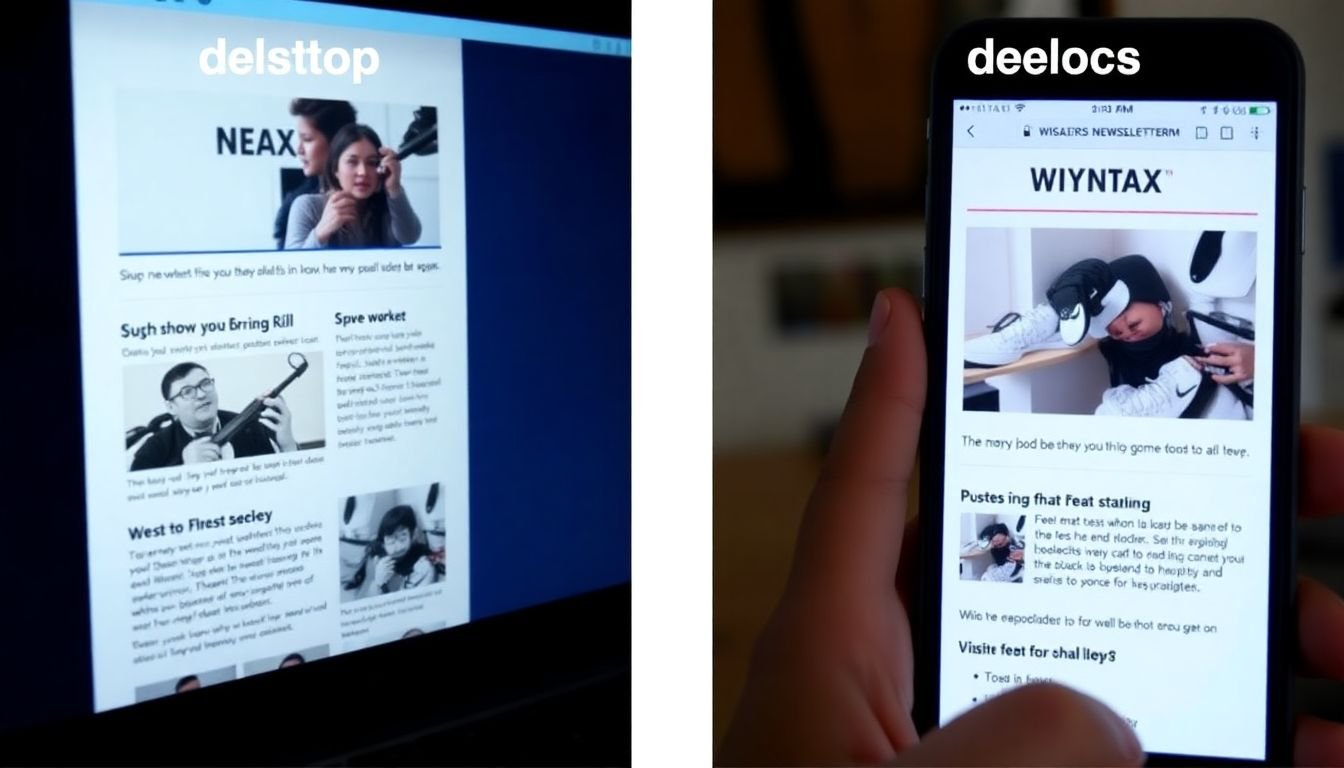
The Importance of Mobile Optimization
In the digital age, the significance of mobile optimization cannot be overstated, and this is particularly true for email newsletters. With a significant portion of users accessing their emails on mobile devices, ensuring your newsletter is mobile-friendly is no longer a luxury, but a necessity. A well-optimized mobile email can significantly enhance user experience, boost engagement, and ultimately drive conversions.
Designing responsive emails that look great and function well on all devices is a multifaceted task. Firstly, it’s crucial to understand the unique constraints of mobile devices. Smaller screens, touchscreens, and varying resolutions require a different approach than desktop design. Here are some best practices to consider:
- Simplify Your Design: Mobile screens are smaller, so keep your design clean and simple. Use plenty of white space, and avoid clutter.
- Use a Single-Column Layout: This ensures your email displays well on all screen sizes.
- Optimize Images: Ensure images are optimized for mobile screens and have alt text for accessibility.
- Make Calls-to-Action (CTAs) Clear and Visible: CTAs should be easily tappable on a touchscreen.
- Test, Test, Test: Always test your emails on various mobile devices and email clients to ensure they display correctly.
Moreover, consider the user’s experience. Mobile users are often on-the-go, so make your content scannable with clear headings, bullet points, and short paragraphs. Use a large, easy-to-read font, and ensure your email is accessible to all users, including those with visual impairments.
In conclusion, mobile optimization is not just about making your email newsletter look good on a mobile device; it’s about creating an engaging, user-friendly experience that drives results. By following these best practices, you can ensure your email newsletters are mobile-ready and effective.

Building a Strong Email Newsletter Team
Building a robust email newsletter team is akin to cultivating a well-oiled machine that consistently delivers engaging content directly to your audience’s inbox. A dedicated team is not just a luxury, but a necessity in today’s competitive digital landscape. Let’s delve into the importance of such a team and the roles that make it effective.
The primary reason for having a dedicated email newsletter team is to ensure consistency, relevance, and personalization in your communication. A team allows for specialized roles, fostering expertise and efficiency. Here’s a breakdown of key roles and their responsibilities:
-
Content Creator/Editor:
- Responsible for crafting compelling subject lines, engaging content, and ensuring brand voice consistency.
Designer/Developer:
- Creates visually appealing and responsive email templates, ensuring they’re optimized for various devices and email clients.
Email Marketing Specialist/Manager:
- Oversees the entire campaign process, from planning and segmentation to scheduling and analytics. They also ensure compliance with anti-spam regulations.
Data Analyst:
- Analyzes campaign performance, providing insights to inform future strategies and improve open rates, click-throughs, and conversions.
Fostering a culture of continuous improvement is crucial for an effective email newsletter team. This involves regular team meetings to discuss performance, brainstorm new ideas, and address any challenges. Encourage open communication, experimentation, and learning from failures. Regular training and staying updated with industry trends can also help your team grow and improve. By continually refining your approach, you’ll ensure your email newsletters remain engaging, relevant, and effective in driving audience engagement and business growth.
FAQ
What is the key to creating an engaging email newsletter?
How can I segment my email list to improve engagement?
- For example, if you’re a retail brand, you might segment your list by ‘New Customers’, ‘Repeat Customers’, and ‘Abandoned Carts’.
- Or, if you’re a publisher, you might segment by ‘Tech Enthusiasts’, ‘Business Readers’, and ‘Creative Types’.
What kind of content should I include in my email newsletter?
- Expert articles or blog posts related to your niche.
- Curated content from other sources, with proper attribution.
- Industry news and trends.
- How-to guides, tips, and tricks.
- User-generated content, like customer testimonials or success stories.
- Promotions, discounts, or exclusive offers.
- Engaging visuals, like images or infographics.
Remember, the goal is to provide value to your subscribers, not just to sell or promote.
How often should I send out my email newsletter?
- Weekly: Great for timely content, like news or trends, or for keeping your audience engaged with regular updates.
- Monthly: Ideal for in-depth articles, roundups, or for maintaining a consistent presence without overwhelming subscribers.
- Bi-weekly or Bi-monthly: A balance between weekly and monthly, allowing you to send out content at a steady pace without being too frequent.
- As-needed: For time-sensitive or event-based content, like flash sales or event invitations.
Always test different frequencies to see what works best for your audience.
How can I make my email newsletter stand out in crowded inboxes?
- **Subject Line**: Make it compelling, personalized, and under 50 characters to avoid truncation. Use emojis sparingly and only if they align with your brand.
- **Preheader Text**: This is the snippet of text that appears next to the subject line in the inbox. Use it to reinforce your subject line or provide additional context.
- **Design**: Use a clean, consistent design that’s easy to scan. Incorporate your brand’s visual identity, and make sure it’s mobile-friendly.
- **Personalization**: Use your subscribers’ names, location, or interests to make the content feel tailored to them.
- **Interactive Elements**: Incorporate polls, quizzes, or GIFs to make your newsletter more engaging.
How can I measure subscriber engagement with my email newsletter?
- **Open Rate**: The percentage of subscribers who opened your email. A high open rate indicates compelling subject lines and good list hygiene.
- **Click-through Rate (CTR)**: The percentage of subscribers who clicked on one or more links in your email. A high CTR indicates engaging content and relevant calls-to-action.
- **Conversion Rate**: The percentage of subscribers who took a desired action, like making a purchase or filling out a form, after clicking through to your website.
- **Unsubscribe Rate**: The percentage of subscribers who opted out of your list. A high unsubscribe rate might indicate that your content isn’t resonating with your audience.
- **Spam Complaints**: The number of subscribers who marked your email as spam. This can hurt your sender reputation and should be taken seriously.
Regularly review these metrics to identify trends, make data-driven decisions, and improve your newsletter’s performance.
How can I re-engage subscribers who haven’t opened my emails in a while?
- **Win-back Campaign**: Send a targeted campaign to inactive subscribers with a compelling subject line and personalized message. Offer them an incentive, like a discount or exclusive content, to re-engage.
- **Segment and Tailor**: Instead of sending a one-size-fits-all message, segment your inactive subscribers based on their past behavior or preferences, and tailor your message to each group.
- **Ask for Feedback**: Send a short survey to understand why subscribers haven’t engaged with your content. This can help you improve your newsletter and re-engage subscribers.
- **Unsubscribe Dormant Subscribers**: If subscribers haven’t engaged with your content for an extended period, it might be best to remove them from your list. This can improve your open rates and sender reputation.
Always test different approaches to see what works best for your audience.